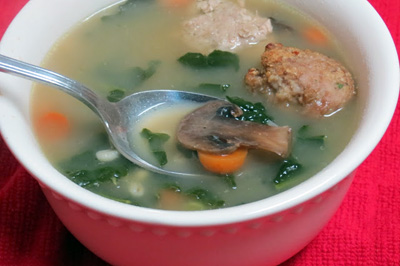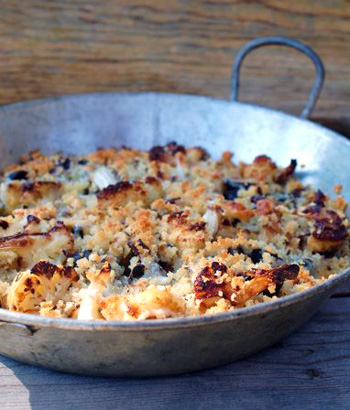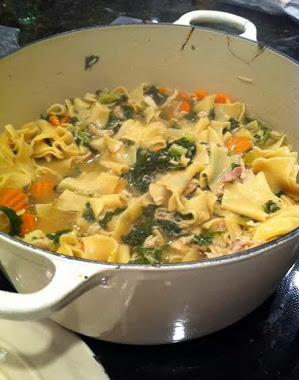 Pop Quiz: What makes two people's three dinners, two lunches, and fills a whole leftover Martha Stewart BPA-free glassware? The answer, my friends, is Italian Wedding Soup. You didn't hear it from me, but this stuff fulfills all the food groups, ensures your fill of kale for a day, and pumps you up full of vitamins. And, it's delicious.
Pop Quiz: What makes two people's three dinners, two lunches, and fills a whole leftover Martha Stewart BPA-free glassware? The answer, my friends, is Italian Wedding Soup. You didn't hear it from me, but this stuff fulfills all the food groups, ensures your fill of kale for a day, and pumps you up full of vitamins. And, it's delicious.
After my mother mentioned the other night that she was making this delightfully cultural (I mean it has the word Italian in the title), I decided to embark on the journey that is soup making myself. I was prepared for an arduous trip, full of blending, food processing, slicing, and dicing. But I was wrong.
Approximately 40 minutes later, I had a delicious meal and used only 2 pots and one mixing bowl. Since we live in a pretty adorable retro house (I'm talking 1920's), there isn't a ton of counter space, though it is more than enough for me. So, it is a testament as to how simple this soup can be. My husband didn't even blink when he walked into the kitchen. Now that's a good sign.

 If you don’t think salad is a hearty enough meal for the dead of winter, this one will certainly change your mind… With a warm duck breast sliced atop a flavor packed mix of greens, vegetables, nuts and cheese, it’s a dish that’s rich and satisfying but also pretty skinny.
If you don’t think salad is a hearty enough meal for the dead of winter, this one will certainly change your mind… With a warm duck breast sliced atop a flavor packed mix of greens, vegetables, nuts and cheese, it’s a dish that’s rich and satisfying but also pretty skinny. The savage weather has reached Biblical proportions. Yes, I am exaggerating, but today it is blowing so hard that I am fully expecting Auntie Em to ride by my window on her bicycle at any time. Frankly, I’d rather look out and see her than some random farm item that was once tethered to the ground.*
The savage weather has reached Biblical proportions. Yes, I am exaggerating, but today it is blowing so hard that I am fully expecting Auntie Em to ride by my window on her bicycle at any time. Frankly, I’d rather look out and see her than some random farm item that was once tethered to the ground.* I’m perhaps one of the most happy-go-lucky kind of guys when it comes to food. I eat everything, enjoy a wide variety of foods, and can find something to eat just about anywhere I am. This ease disappears when I talk about pizza and my world view becomes nothing short of black and white. But only with pizza. Stay with me here.
I’m perhaps one of the most happy-go-lucky kind of guys when it comes to food. I eat everything, enjoy a wide variety of foods, and can find something to eat just about anywhere I am. This ease disappears when I talk about pizza and my world view becomes nothing short of black and white. But only with pizza. Stay with me here. I love soups, stews, chilies – one pot wonders that will fill you up and feed you for days! Often when I’ve been writing about food, having a food photoshoot for a book or magazine or discussing menus with clients, the last thing I want to do is go home and cook. Yet, cooking is my therapy too – being a foodie is a tangled web indeed.
I love soups, stews, chilies – one pot wonders that will fill you up and feed you for days! Often when I’ve been writing about food, having a food photoshoot for a book or magazine or discussing menus with clients, the last thing I want to do is go home and cook. Yet, cooking is my therapy too – being a foodie is a tangled web indeed.
